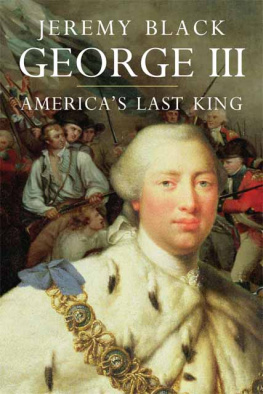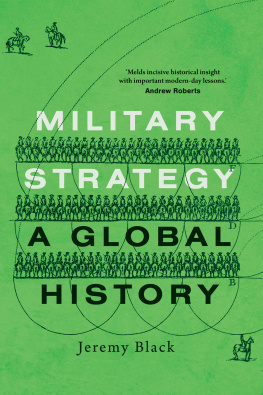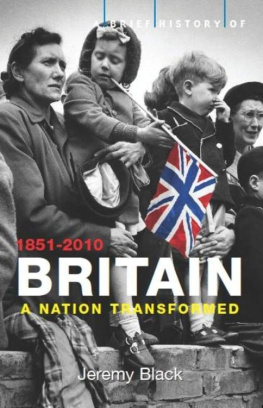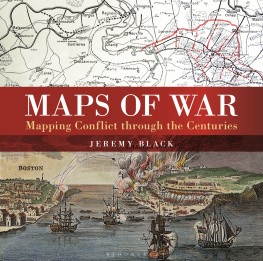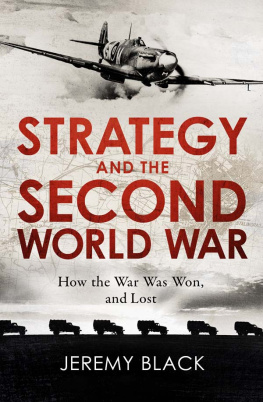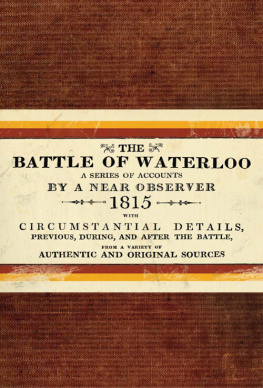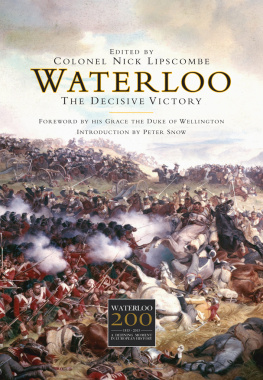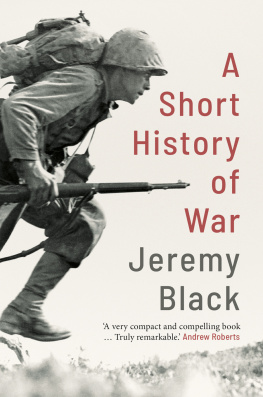Jeremy Black - The Battle of Waterloo
Here you can read online Jeremy Black - The Battle of Waterloo full text of the book (entire story) in english for free. Download pdf and epub, get meaning, cover and reviews about this ebook. year: 2010, publisher: Random House Publishing Group, genre: History. Description of the work, (preface) as well as reviews are available. Best literature library LitArk.com created for fans of good reading and offers a wide selection of genres:
Romance novel
Science fiction
Adventure
Detective
Science
History
Home and family
Prose
Art
Politics
Computer
Non-fiction
Religion
Business
Children
Humor
Choose a favorite category and find really read worthwhile books. Enjoy immersion in the world of imagination, feel the emotions of the characters or learn something new for yourself, make an fascinating discovery.

- Book:The Battle of Waterloo
- Author:
- Publisher:Random House Publishing Group
- Genre:
- Year:2010
- Rating:3 / 5
- Favourites:Add to favourites
- Your mark:
- 60
- 1
- 2
- 3
- 4
- 5
The Battle of Waterloo: summary, description and annotation
We offer to read an annotation, description, summary or preface (depends on what the author of the book "The Battle of Waterloo" wrote himself). If you haven't found the necessary information about the book — write in the comments, we will try to find it.
The Battle of Waterloo — read online for free the complete book (whole text) full work
Below is the text of the book, divided by pages. System saving the place of the last page read, allows you to conveniently read the book "The Battle of Waterloo" online for free, without having to search again every time where you left off. Put a bookmark, and you can go to the page where you finished reading at any time.
Font size:
Interval:
Bookmark:

Also by Jeremy Black
Crisis of Empire: Britain and America in the Eighteenth Century
European Warfare, 14531815
Rethinking Military History
War: A Short History
War and the World:
Military Power and the Fate of Continents, 14502000
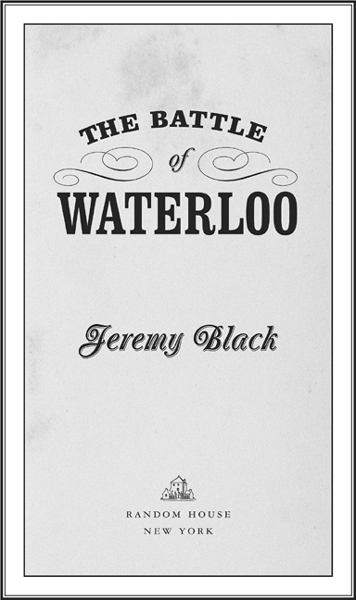
For Charles Esdaile
A most destructive and murderous fire was opened on our column of round, grape, musquetry, rifle and buckshot along the whole course and length of their line, in front, as well as on our left flank. The officers and men being as it were mowed down by ranks.
IT IS 1815 INDEED, but not the French at Waterloo on June 18. Instead, this is Lieutenant Gordon of the British army reporting on the resounding British defeat at New Orleans on January 8 by American forces commanded by Andrew Jackson. This passage provides a key context for this book: that of warfare in the period, and not only that of Napoleonic Europe. Waterloo is used to discuss the changing nature of war, the rise and fall of Napoleons empire, and the influence of the French Revolutionary and Napoleonic Wars on the nineteenth century.
Waterloo was an iconic battle for the British, a triumph of endurance that ensured a nineteenth-century world in which Britain played the key role. It was also a defining moment for the French, bringing to an end both the reign of Napoleon I and the Second Hundred Years War between Britain and France, a conflict that had started in 1689. Further, the battle was important for a host of other participants, from Prussia, the state that was to be the basis of modern Germany, to the Netherlands and Belgium, whose fate it decided until the Belgian revolution of 1830, and to minor German principalities such as Hanover, Brunswick, and Nassau, each of which also sent troops to the Duke of Wellingtons army.
The echoes of the battle can still be felt across Britain and the anglophone world, and also more widely. While writing this book, I visited Rostock in Germany, where there is an impressive memorial to Gebhard Leberecht von Blcher, the Prussian commander at Waterloo. In England, I visited the 175-foot Wellington Monument (begun in 1817 and completed in 1854) in Somerset, a site that can be seen by all travelers on the glorious Great Western Railway route to the West Country; caught a glimpse of Waterloo Cross in Devon; traveled to Waterloo station, the terminus of one of the rail lines from Exeter; passed through Waterlooville in Hampshire; saw a print of a Victorian gathering for the hare coursing Waterloo Cup; sat often at my favorite seat in London overlooking, as it so happens, Waterloo Place; and, thanks to the success of the film Mamma Mia! (2008), was aware of frequent renditions of the ABBA song Waterloo. Lunch in Parliament, moreover, enabled me to see again The Meeting of Wellington and Blcher After Waterloo, a crowded but grand painting by Daniel Maclise (180670). Now largely unknown, in part due to the demise of history painting, Maclise was much applauded in his day as a great artist and received 7,000 for this painting, finished in 1861, and for The Death of Nelson (1864). These works for the Houses of Parliament, built anew after being burned down in 1834, were thought an appropriate inspiration and backdrop for the empires legislators. This list of celebratory references is eclectic, of course, but resonant of a strong layer of commemoration.
I am most grateful for the opportunity to give the Wellington Lecture at the University of Southampton in 2000, and also to speak at the 1998 Wellington Conference held at that University. I would also like to thank Charles Esdaile for discussing the battle with me and for commenting on an earlier draft. It is a great pleasure to dedicate this book to Charles. We were colleagues together at Durham in the early 1980s and then went separate ways in career terms, but we have remained friends and share a strong commitment both to military history and to the need to understand the political contexts of war. Charles is a major inspiration for all those who work on the period. I have also benefited from advice on an earlier draft by Ian Beckett, Rick Schneid, and Dennis Showalter, and on particular points from James Chapman, Malcolm Cook, Odile Cook, James Friguglietti, Bill Gibson, Rob Johnson, James Kay, and Bob Tennant. Howard Cohn has proved an exemplary copy editor.
Those who read a book on Waterloo want to hear of battle, not rail timetables, and it is to this we must turn. Alongside the discussion of military capabilities, options, and contingencies, it is important to recall the human suffering, not least because, otherwise, the historian can become too detached from what he is writing about. Captain John Hill of the 23rd Foot (Royal Welsh Fusiliers) of the British army, wrote to his brother-in-law after the battle:
The front wound still continues to discharge very much, he is a most confounded ugly fellow as big as a tea-cup. I got the grape shot in my shoulder and five other wounds in my face. Honesty [his horse] got three shot. He bled to death.
There is uncertainty over the casualty figures, which, itself, is a comment on the nature of war in the period. This problem is accentuated by the numbers of troops who used the opportunity to leave their armies, which was particularly an issue for the routed French but was also serious for the Prussians after their defeat at Ligny two days earlier. At Waterloo, Wellingtons army suffered about 16,200 killed, wounded, or missing out of 69,700 men, about 23 percent. Over 3,500 men were killed. Their Prussian allies suffered about 7,000 casualties at Waterloo, or about 14 percent. French casualties have been estimated at about 31,000 killed or wounded, with several thousand more men captured. The large number of troops who deserted after the battle made the impact of Waterloo on Frances main army more serious. Earlier, on June 16, the battles of Quatre Bras and Ligny had also been costly, with Wellingtons army suffering 4,600 casualties, the Prussians 18,800, and the French 17,800. In this case, as in others, Wellingtons army refers to the Anglo-Allied forces under Wellingtons command, forces that were British, Dutch, Belgian (at the time, part of the Netherlands), and German.
Individual accounts of the battle drive the reality of these losses home, although they suffer from many flaws, not least the extent to which they offer a partial perspective, namely that of a narrator who could only see and experience part of the battle and who sought to do so in the exhausted aftermath of the day. Personal memoirs also face the problem of the process of construction, and this was noted at the time. In 1814, Sergeant Thomas Morris noted:
The drum-major of a regiment in our brigade, who, though he had not been within the smell of powder, wrote an eloquent and affectionate letter to his wife in London, giving her a detailed (but purely imaginary) account of the affair, describing very minutely his own exploits highly pleasing to the good wife, who took occasion to show it to some of her friends, who advised her to send it to the editor of one of the daily papers, who immediately gave it insertion.
Contradictory accounts pose serious difficulties for scholars. As Rory Muir noted of the battle of Salamanca in 1812 between Wellington and French forces:
Font size:
Interval:
Bookmark:
Similar books «The Battle of Waterloo»
Look at similar books to The Battle of Waterloo. We have selected literature similar in name and meaning in the hope of providing readers with more options to find new, interesting, not yet read works.
Discussion, reviews of the book The Battle of Waterloo and just readers' own opinions. Leave your comments, write what you think about the work, its meaning or the main characters. Specify what exactly you liked and what you didn't like, and why you think so.

